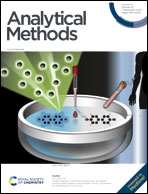Quantitative injection strip platform using water-soluble paper and magnet based on a lateral flow assay
Abstract
Quantitative analysis for lateral flow immunoassay (LFA) strips was conducted continuously. Quantitative analysis means measuring concentration, which represents the number of molecules per unit volume. In this study, we designed a quantitative injection (QI) strip by modifying the structure of general LFA strips to inject the same unit volume. To achieve the injection of the same unit volume, we used water-soluble paper and magnet. In addition, the QI strip was fabricated to enable the physical separation of the gold conjugate pad from the nitrocellulose membrane (NC membrane) at the optimized time after sample injection. The optimized time refers to the time from the point at which the sample started flowing on the NC membrane to the point at which the strip was separated. At the samples of same concentration, the LFA strip increases detection signals as the volume of injected sample increases. In contrast to the LFA strip, the QI strip maintained consistent detection signals even with increasing volume of injected sample. Furthermore, the QI strip demonstrated an 11-fold lower deviation compared to the LFA strip. These results are attributed to the separation function of the QI strip. In conclusion, the QI strip is more suitable for quantitative analysis compared to the LFA strip due to the same unit volume without additional equipment such as a pipette. This study is expected to contribute to the development of user-friendly POCT and strip-based quantitative analysis.



 Please wait while we load your content...
Please wait while we load your content...